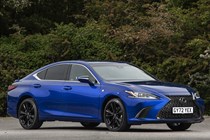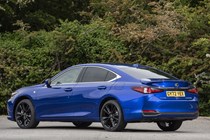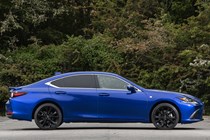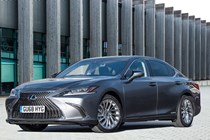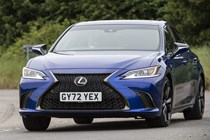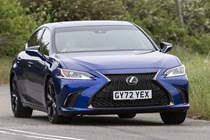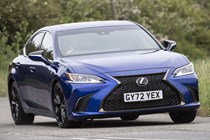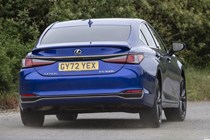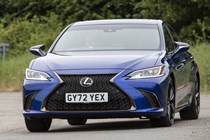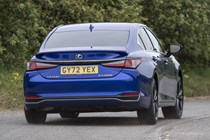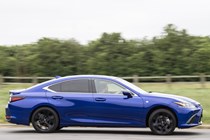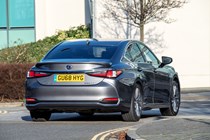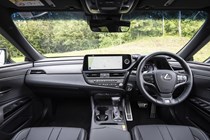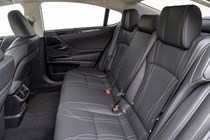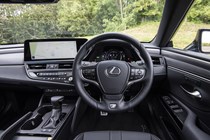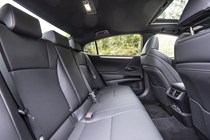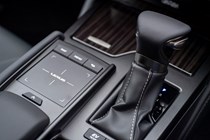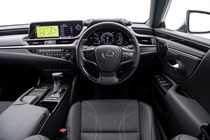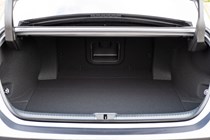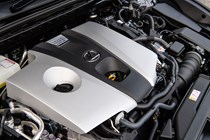
Lexus ES boot space, practicality and safety
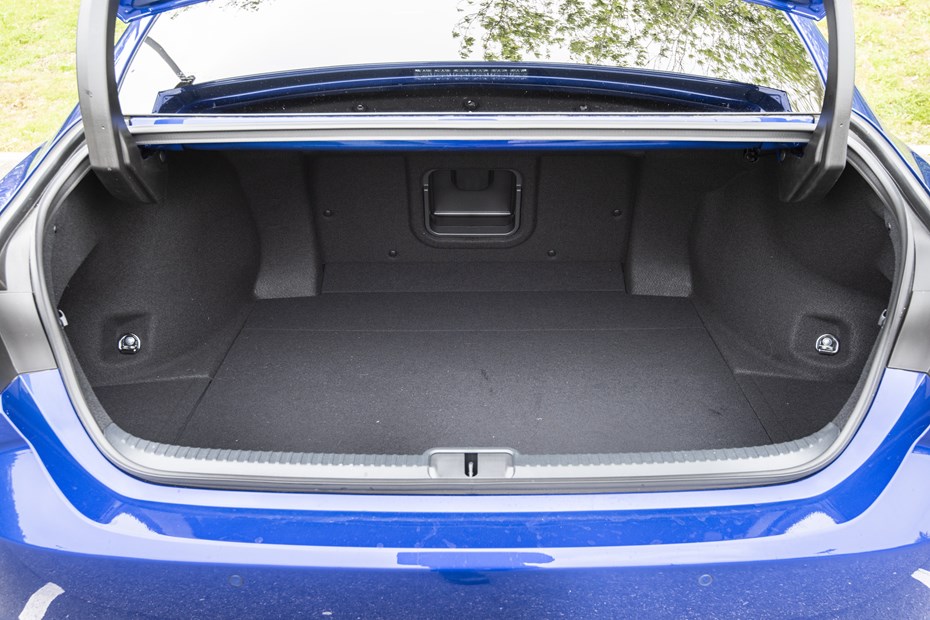
- Space for four adults in comfort
- Interior storage lacking
- Boot a good size for a hybrid
How much space is there?
Space for passengers is excellent in the ES. There’s room for four six-foot adults with ample leg- and head-room even in the back seats. The front seats are electrically adjustable on most models, and there’s ample adjustment in both the seat and the steering wheel to accommodate drivers of all sizes.
While there are three seats in the rear, the middle is very much a temporary perch rather than a comfortable spot for a long journey. Better to use it as a four-seater and enjoy the wide, fold-down armrest in the centre, which features cupholders and a storage cubby.
Boot space and storage
The Lexus ES offers 454 litres of boot space. That looks relatively cramped compared to the 530-litre BMW 5 Series, for example, but it’s actually larger than the boots on all of its hybrid rivals which tend to be of the plug-in type. The Audi A6 TFSI e, for example, only has 360 litres of space. The Mercedes E-Class hybrid has 370 litres and even the spacious BMW 530e offers just 410 litres. The Lexus, being a self-charging hybrid, doesn’t have as large a battery pack to accommodate, and so its boot splits the difference between these PHEVs and their combustion-engined siblings.

The ES’s boot has a wide opening, but it has rather a loading lip. More annoyingly, the rear seats don’t actually fold down – so if you want to carry longer items, you’re limited to what you can stuff through the ski hatch.
Storage for smaller items isn’t stellar either. The door bins are large and there’s a cubby under the central armrest, but there’s nowhere convenient to leave a plugged-in phone – necessary for some, as while Apple CarPlay is available wirelessly Android Auto is not. At least the wireless phone charging pad, which sits just ahead of the central armrest, is large and covered in grippy rubber.
Is it easy to park?
Visibility isn’t spectacular, with a high window line and narrow rear window. All models do get a all-round parking sensors and a rear-view camera though, which helps significantly, and a 360-degree camera is optional on base-spec and F-Sport cars and standard for the other two trims.
The ES is a large car, nearly five metres long, so you’ll need a big space. Some models were available with cameras rather than door mirrors – this high-tech solution was fairly poorly implemented with ugly monitors and limited improvements in running costs, so we reckon it’s best avoided.
Safety
- Five-star Euro NCAP rating
- Bags of safety kit as standard
- More sophisticated tech on offer in top-spec cars
The ES was tested by Euro NCAP in 2018 and scored the full five-star rating, with impressive scores across the board. In fact, Euro NCAP awarded it best-in-class in its year, though five years on the rating isn’t quite as valid as it was. It has a full complement of airbags including head, side and knee airbags, full length curtain airbags, rear side airbags and a pop-up bonnet for passenger protection.
There are also a large selection of active safety systems, with all cars getting as standard:
- Adaptive cruise control
- Lane-keeping aids
- Automatic high beam
- LED headlights
- Autonomous emergency braking
- Pre-collision system
High trim levels also get matrix LED headlights, blind-spot monitoring and rear cross-traffic alert and braking.

Euro NCAP rating
| What is Euro NCAP? ⓘ | |
|---|---|
| Adult Occupant: | 91% |
| Child Occupant: | 87% |
| Vulnerable Road User: | 90% |
| Safety Assist: | 77% |
Equipment and options
- 3x3 point rear seat belts
- ABS
- Alarm
- CD
- Driver`s airbag
- Electric mirrors
- Front electric windows
- Headlight washers
- Heated mirrors
- Heated seats
- Height adjustable drivers seat
- Isofix child seat anchor points
- Leather seat trim
- Lumbar support
- Manual sunroof
- Parking sensors
- PAS
- Passenger`s airbag
- Rear electric windows
- Side airbags
- Traction control
- Electric driver`s seat
- Electric passenger`s seat
- Central locking
- Metallic Paint
- Sat Nav
- Service indicator
- Electric driver`s seat
- Electric passenger`s seat
- Sports seats
- Central locking
- DVD
- Metallic Paint
- Sat Nav
- Service indicator
- Steering wheel rake adjustment
- Steering wheel reach adjustment
- Central locking
- Electric driver`s seat
- Electric passenger`s seat
- Metallic Paint
- Sat Nav
- Service indicator
- n/a
- Central locking
- Metallic Paint
- Sat Nav
- Service indicator
- n/a
- DVD
- Electric driver`s seat
- Electric passenger`s seat
- Sat Nav
- Central locking
- Metallic Paint
- Service indicator
Dimensions
| Length | 4975mm |
|---|---|
| Width | 1865mm - 2117mm |
| Height | 1445mm |


